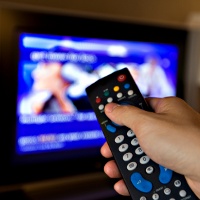
Jakarta, Look, how much you are tempted to buy something after seeing the ad. When viewed over the longer, sometimes a person buying the goods had in fact he has or not so he needs.
When there is a plasma TV commercials, many people buy them when they still had the TV in the house that is still functioning. So also with mobile phones and motor vehicles.
That the effects of advertising. Advertising woo potential buyers in two ways.
1. There are ads that fit the reality or also called 'logical persuasion' for example, this car can travel a distance of 20 km per liter.
2. There are also ads that undermine alertness or so-called 'non-rational influence' example of a beautiful woman and then came around the car.
Neuromaketing is a discipline that studies the mind of consumer response to marketing stimuli. Nevertheless, the impact of advertising on brain function as it is studied in neuromarketing is still unclear.
But now, researchers at the University of California, Los Angeles and the George Washington University have shown that some types of ads can evoke brain activity at different levels, depending on the use of logical persuasion ad type or non-rational influences.
The study, published in the Journal of Neuroscience, Psychology, and Economics found that brain regions involved in decision-making and emotional processing becomes more active when individuals see an ad that uses logical persuasion techniques rather than looking at ads that use the technique of non-rational influences. This brain region inhibits the individual to respond to certain stimuli.
"Brain activity is at a low level when looking at ads that use images of non-rational influences. It's not hinder a person's behavior in response to certain stimuli. That is, a person's ability to resist is reduced when going to buy a product that is described in advertisements by non-technical influences rational, "said Dr.. Ian Cook, professor of psychiatry at the Semel Institute for Neuroscience and Human Behavior at UCLA.
Dr. Cook and his colleagues showed pictures of ads to 24 healthy adults consisting of 11 women and 13 men as he recorded the electrical activity in the brain using electroencephalography (EEG). Each participant was shown 24 advertisements that appeared in magazines and newspapers.
Ads with pictures logical persuasion, among others; tables of facts and figures about tobacco products, the details of how to use a good toothbrush, and advice choosing a dog food based on its activity level.
While the influence of sample ads with non-rational techniques for example; images of water splashing on drinks ads, a picture of a beautiful woman standing wearing jeans on jeans ad, and a picture of a woman jumping over a fire hydrant spraying water while a man behind him grinning on tobacco advertising .
In conclusion
Researchers found that logical persuasion image (or data table) are significantly associated with high activity of brain regions involved in decision-making and emotional processing, namely the orbitofrontal and anterior cingulate, amygdala and hippocampus. This part of the brain activity that increase will make people interested in the ad.
The findings, reported by Eurekalert, Wednesday (21/09/2011) This reinforces the hypothesis that the choice of purchasing goods and services can be shaped by many factors, including the presentation of advertising in a logical, persuasive information and use of images or text that can alter behavior without requiring awareness of the a message to be conveyed
"The results show that when non-rational response to stimulation, decreased activity in brain regions that inhibit the response to stimuli. These findings support the notion that some advertisers want to woo the consumer, not to persuade consumers to buy their products," concludes Dr. Cook.
Tidak ada komentar:
Posting Komentar